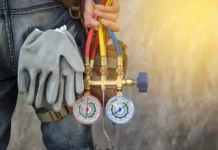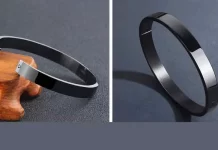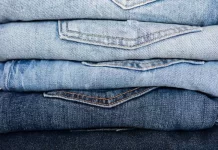Barrier packaging includes various plastic materials, offering protection to food, drinks, and many other products. Manufacturers use this type of packaging to protect their goods from spoiling by external elements. In barrier packaging, the term barrier implies coatings on the substances wrapped in plastic materials. Barrier packaging protects goods from being damaged by external factors, like water, oxygen, oils, light, etc.
Barrier polyamide is one of the best barrier packaging materials. It is referred to as Nylon-MXD6, produced from m-xylene diamine by polycondensation MXDA. Nylon-MXD6’s main chain has an aromatic ring. It has low water absorption, high gas-barrier, greater strength, and moisture permeability properties. The gas-barrier property of Nylon-MXD6 is high towards oxygen and carbon. It is primarily used for making bottles, packing sheets, and laminated containers.
There are specific barrier properties to consider while producing packaging materials, like roll stock structures, sheets, etc. These properties are oxygen permeation, UV protection, aroma preservation, vapour permeation, and permeability of other gases. While developing any packaging material, it is essential to consider all external factors that may spoil it. The typical barrier packaging materials are made up of glass, metal, plastic, paper, and paperboard.
Many manufacturing industries use the below barrier packaging material to pack their products and keep them safe from external factors.
4 Types Of Barrier Packaging Materials
- Polyvinyl Dichloride (PVdC)
PVdC is a thermoplastic polymer, which is highly clear and flexible. This thermoplastic polymer is formed from the polymerization of vinyl chloride. It is the material that acts as the best barrier for oxygen and moisture. PVdC can also be used as a sealant. But, the use of Polyvinyl Dichloride in manufacturing industries has deteriorated because of the presence of chlorine. PVdC has mechanical and chemical recycling restrictions.
PVdC is highly resistant to alkalis and acids and is insoluble in organic solvents and oil. When the food is packed in a material made from PVdC, it enhances its shelf life. It offers a glossy, shiny, and transparent appearance. PVdC has been primarily used for packing fresh meat. As this material is non-recyclable and harmful to the environment, manufacturing industries are switching to other feasible packaging alternatives.
- Ethylene Vinyl Alcohol (EVOH)
Another barrier packaging material used extensively is Ethylene Vinyl Alcohol (EVOH). Unlike PVdC, EVON does not contain chlorine. It is a thermoplastic semi-crystalline copolymer, which is highly glossy and transparent. EVOH is formed from the copolymerization of vinyl alcohol and ethylene. This barrier packaging material is highly resistant to organic solvents, oils, and hydrocarbons. In EVOH, the oxygen barrier property declines as the percentage of ethylene (mol%) increase. This is because EVOH is semi-crystalline.
EVOH’s gas barrier property will lose if it is exposed to moisture. It happens due to the hygroscopic characteristic of EVOH. It is typically intervened with PE, PS, PET, or PP to form coextruded or laminated material. EVOH is exceptionally expensive, but laminated material is relatively inexpensive. This coextruded material preserves materials from external mechanical properties and helps manufacturers to have the overall cost.
- Polyamide (PA)
As mentioned above, barrier polyamide (PA) is one of the best barrier packaging materials. It possesses a satisfactory oxygen barrier property and mechanical properties, like toughness, strength, high tensile, and low elongation. Polyamide or Nylon also offers the finest chemical barrier properties, especially for aroma and flavours. This material is best for packing products containing fats and oils, as it possesses high heat-resistant property.
Polyamides have high strength and durability. It is hugely resistant to flex-crack, scratch, and puncture and has a very high melting point. Polyamide or Nylon is considered the best packaging material for cheese. This material is exceptionally easy to process at high or low temperatures. Unoriented nylon and Biaxially Oriented (BOPA) nylon are the two common types of polyamide. The BOPA material has high stiffness, high tensile strength, high oxygen barrier, and lower elongation property.
- Polyvinyl Chloride (PVC)
Polyvinyl chloride (PVC) is a ubiquitous plastic-type material with multiple constructions, building, packaging, electronics, health, etc. PVC has replaced many other packaging materials, like glass, paper cards, etc. It is similar to polyethene. PVC or vinyl polymer is formed from the polymerization of vinyl chloride.
The only difference is that one of the hydron atoms on every carbon of the PVC’s backbone chain is replaced by a chlorine atom. PVC is hugely resistant to oils and fats and has high moisture vapour transmission. It is commonly used for packaging fruit juice, cold drink, or mineral water bottles. But, PVC is harmful to the environment due to the presence of chlorine. Hence, its usage has been declining in recent years.
Conclusion
Several barrier packaging elements, like bags, barrier films, etc., are used to pack products to conserve them from external aspects. Sensitive items get extra protection through barrier packaging. Products packed with barrier material reach out to customers with utmost safety.




















